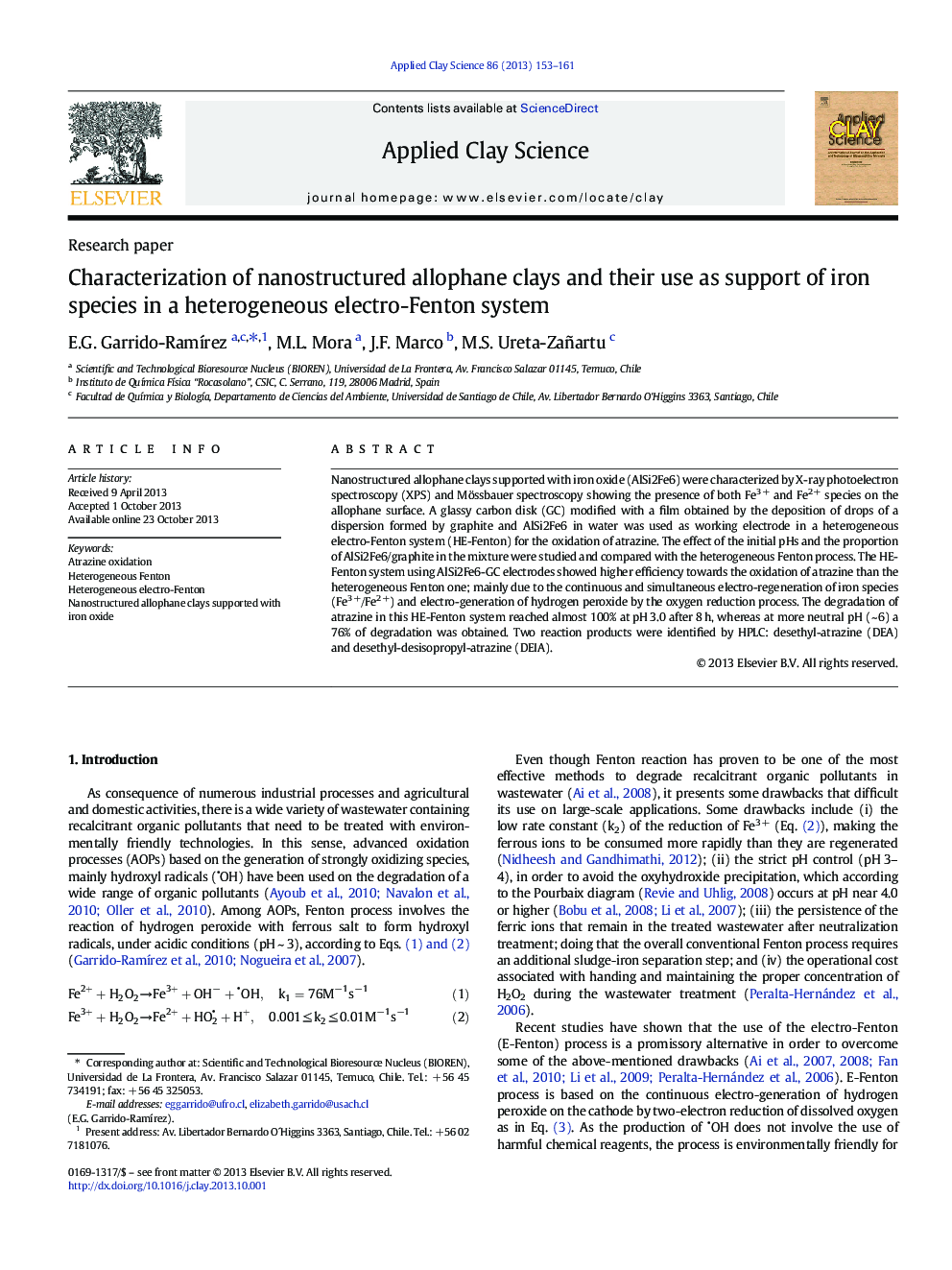| Article ID | Journal | Published Year | Pages | File Type |
|---|---|---|---|---|
| 8047291 | Applied Clay Science | 2013 | 9 Pages |
Abstract
Nanostructured allophane clays supported with iron oxide (AlSi2Fe6) were characterized by X-ray photoelectron spectroscopy (XPS) and Mössbauer spectroscopy showing the presence of both Fe3Â + and Fe2Â + species on the allophane surface. A glassy carbon disk (GC) modified with a film obtained by the deposition of drops of a dispersion formed by graphite and AlSi2Fe6 in water was used as working electrode in a heterogeneous electro-Fenton system (HE-Fenton) for the oxidation of atrazine. The effect of the initial pHs and the proportion of AlSi2Fe6/graphite in the mixture were studied and compared with the heterogeneous Fenton process. The HE-Fenton system using AlSi2Fe6-GC electrodes showed higher efficiency towards the oxidation of atrazine than the heterogeneous Fenton one; mainly due to the continuous and simultaneous electro-regeneration of iron species (Fe3Â +/Fe2Â +) and electro-generation of hydrogen peroxide by the oxygen reduction process. The degradation of atrazine in this HE-Fenton system reached almost 100% at pHÂ 3.0 after 8Â h, whereas at more neutral pH (~Â 6) a 76% of degradation was obtained. Two reaction products were identified by HPLC: desethyl-atrazine (DEA) and desethyl-desisopropyl-atrazine (DEIA).
Related Topics
Physical Sciences and Engineering
Earth and Planetary Sciences
Geochemistry and Petrology
Authors
E.G. Garrido-RamÃrez, M.L. Mora, J.F. Marco, M.S. Ureta-Zañartu,
